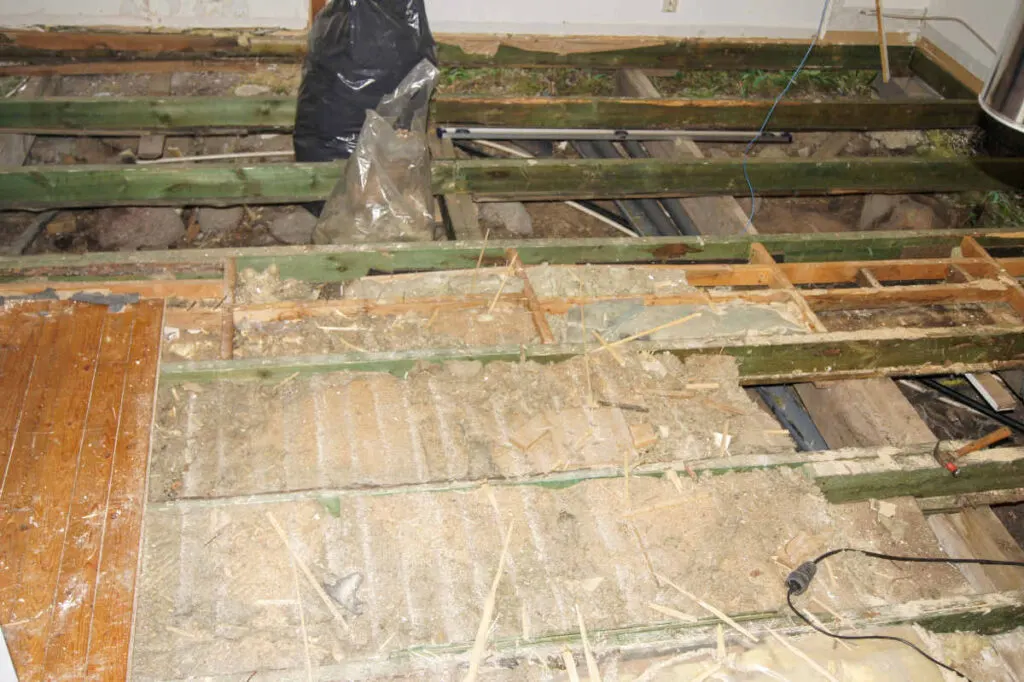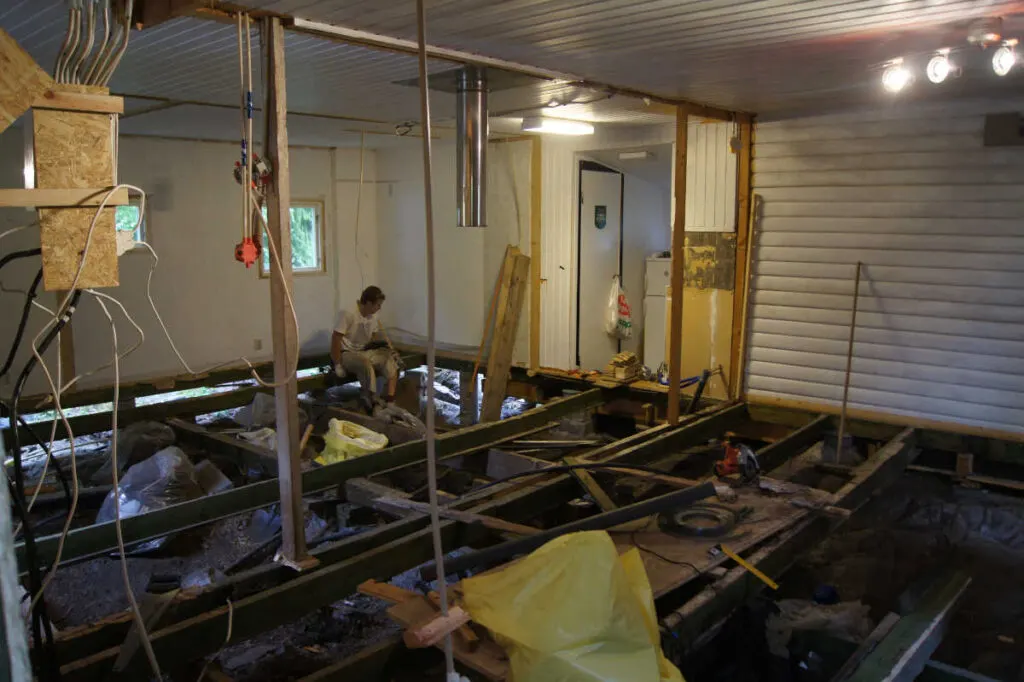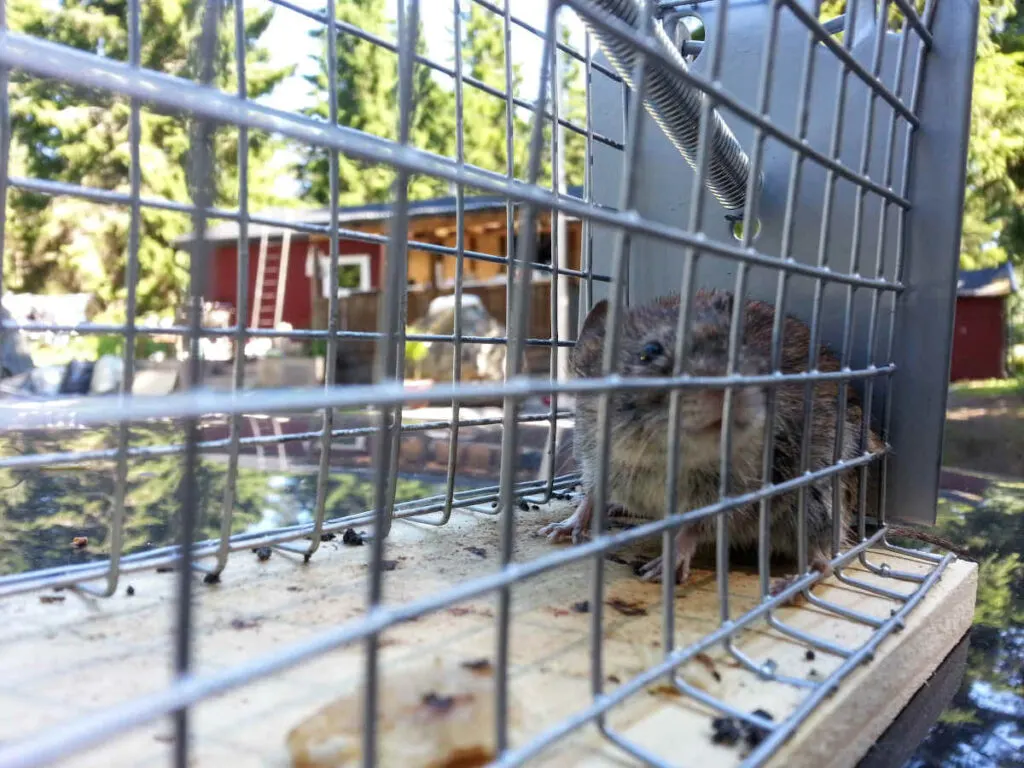If you are in the process of home building or home renovation, you may be asking yourself where should the bathroom vent lead to. Venting to the crawl space might seem like a OK choice since it is out of the house, but let’s find out if it is really the case.
We’ll explore nine reasons why venting to the crawl space is not recommended.
Venting a Bathroom Fan Into the Crawlspace Is Illegal
First and foremost, venting into a crawlspace for a bathroom is illegal. The International Residence Code prohibits them through clauses M1501.1 and M1507.2.
M1501.1 Outdoor discharge. “The air removed by every mechanical exhaust system shall be discharged to the outdoors in accordance with Section M1506.3. Air shall not be exhausted into an attic, soffit, ridge vent or crawl space.
Exception: Whole-house ventilation-type attic fans that discharge into the attic space of dwelling units having private attics shall be permitted.”
M1507.2 Recirculation of air of the IRC. “Exhaust air from bathrooms and toilet rooms shall not be recirculated within a residence or to another dwelling unit and shall be exhausted directly to the outdoors. Exhaust air from bathrooms and toilet rooms shall not discharge into an attic, crawl space or other areas of the building.”
It Can Compromise Your Insurance and Ability to Sale

Because of the violations to the International Residential Code, it can make your home be compromised for insurance claims and the ability to perhaps get a homeowner’s policy. You may be forced to go with a lesser policy or an iffy agency or be made to fix the vent before getting insurance on the home.
Real estate agents may be reluctant to take on your home and try to find buyers with a bathroom vent that is vented to a crawlspace. This is why it’s always best to vent the bathroom fan to the outside of the house.
Homeowners may not want to undertake a purchase that requires them to have to renovate a home to meet the International Residence Code clause requirements.
While you may think that a quick and dirty vent job to a crawlspace can get the job done, it doesn’t have practical long term feasibility.
Moist Bathroom Air Can Cause Structural Damage

A bathroom fan is installed to exhaust the moist air from the room and away from the area so that the moisture won’t cause any problems.
When the bathroom vent is put to go into the crawlspace, you’re just directing the air from the bathroom to the underside of the house where it will stay damp and moist, putting you at risk for structural damage. Mold in the crawl space is dangerous to your health and very expensive to remove.
Moisture can degrade wood over time and attract insects that can eat away at the wood, causing your home to be structurally unsound and unsafe.
Introducing Moisture Into the Crawlspace Can Cause Mold Growth
While mold growth is unpleasant to see and can destroy walls, wood, and anything else in its path, we’re going to focus on how moisture and mold affect your health.
The National Institute of Health reports that living in a home with mold and dampness can cause flare-ups of asthma. It may also give you an increased ability to catch colds, flu, or chest infections.
Coughing and wheezing may occur. You may have sneezing, a runny nose, or nasal swelling from rhinitis, or find yourself short of breath. Some people can develop hypersensitivity pneumonitis where your lungs get an allergic reaction to the air you’re breathing. While rare, it is still possible to get it from breathing in mold and dampness.
Wet Insulation Does Not Function Well

This one may be the most obvious and yet most missed reason. Your crawlspace has insulation that is there to keep your home cool in the summer and warm in the winter.
This insulation does not perform as well when it is wet. Wetness can even damage insulation and cause it to need to be replaced. While you may be trying for the cheaper vent placement to save money, it will end up costing you much more in replacement insulation down the road.
Water Sources Attract Insects
If you do not want to be fighting an never-ending battle trying to keep bugs from infiltrating your home via drains, doors, windows and more, you will not want to vent anything to the crawlspace. Wetness will attract a wide variety of bugs and insects; including but not limited to cockroaches, earwigs, ants, termites, silverfish, mosquitos, pill bugs, and dust mites.
Yes, you read that right, house dust mites will thrive in your crawlspace and come into the home at every opportunity. House dust mites are one of the leading causes of asthma symptoms, rhinitis, and eczema.
Termites can destroy the foundation of your home as well as the subflooring, leaving you vulnerable to home shifting and even structural collapse. You should always be doing maintenance checks to make sure your crawlspace is as moisture-free as possible.
Warm Air Gets Trapped and Affects the Whole House
Since the air that you are trying to get rid of is warm and moist, expelling that warmth into an insulated crawlspace will trap it there and make the entire house warmer. If you are already trying to keep your home energy bill down, a bathroom vent to a crawlspace is keeping your home warmer and therefore raising your energy costs.
Another way that warm air will affect the house is through being trapped in the underlayment of your floors. Whether you have laminate, wood, tile, or carpet, chances are you have an underlayment between the subfloor and your flooring choice. If warm moist air is trapped there, it can breed mold, mildew, and bacteria, leaving you at risk of being sick.
Warmth and Water Attract Rodents

If you didn’t like all the extra bugs and insects that water and warmth bring to the crawlspace, you’re really not going to like that it will also be a haven for mice and rats. These furry beasts flock to wet areas and can be a huge problem, both for you and for your home.
Mice and rats can chew into the electrical system and wreck havoc on your home, making for an increase in costly repairs. They are also going to try to come in to your home, leaving behind waste that can affect your entire respiratory system. HPS, or hantavirus pulmonary syndrome, is caused by urine and feces from infected rodents.
Damp Causes Odors Which Can Permeate Throughout the House

That stale musty odor you keep smelling thoughout the house? Yeah, that may be from your crawlspace being wet and warm. Venting a bathroom to that area can make your entire home smell off and while air fresheners and a thorough cleaning may mask that smell, it will never go away because the problem lies in the moisture that is trapped under your home.
By keeping your crawlspace dry, you’re taking care of the odor issue at the source.
These are just a few of the many reasons that you will definitely not want to vent your bathroom to go into your crawlspace area. Whether you are in fear of mice or bugs, want to keep your health and home, or just don’t want to run amok of the law, there’s a reason on here that should definitely point you to the “just say no” option.
Moreover, now that you have seen all the problems associated with excess moisture in the crawl space, you will understand why the installation of a crawl space dehumidifier is so important.
